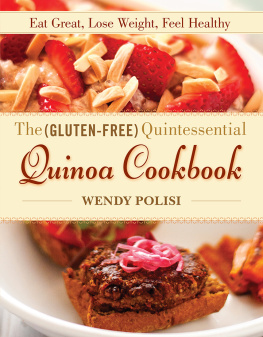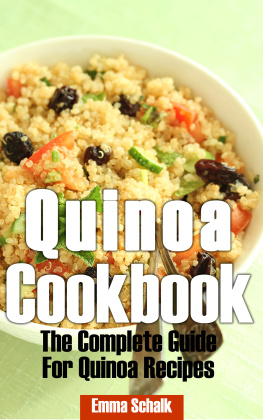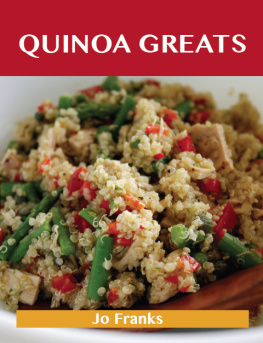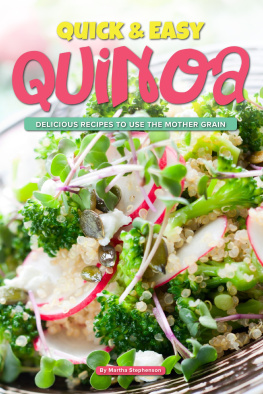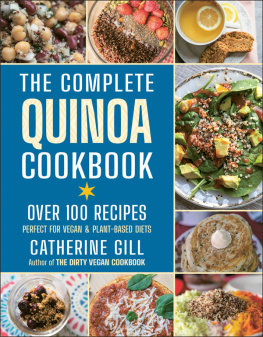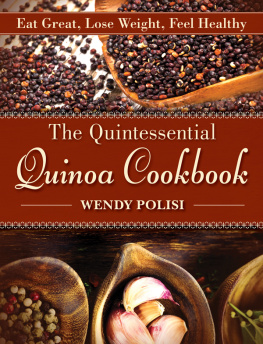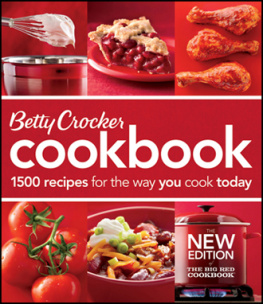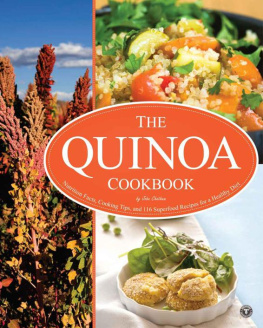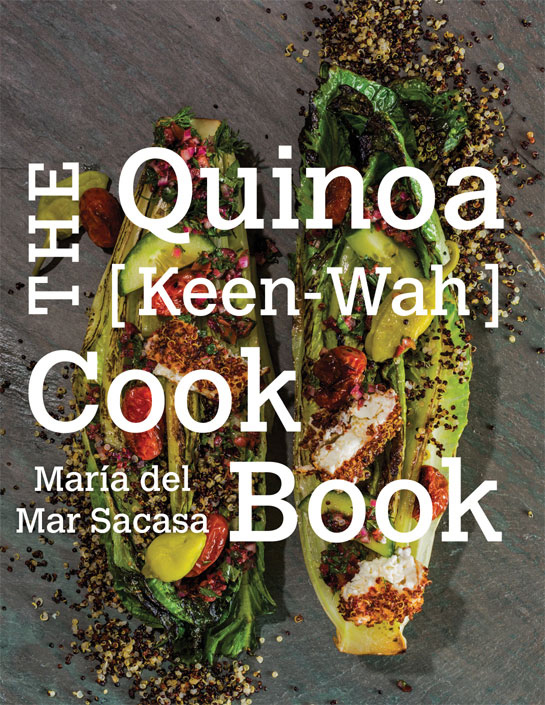
Contents
Guide

Quinoa, like bacon-wrapped scallops in the 1980s and kale in the very recent past, is enjoying its moment in the culinary limelight. Because quinoa seeds (yes, while we tend to think of quinoa as a grain, its actually a hardy grasslike plant, and we consume its seeds) are naturally gluten-free, its become a go-to staple grain for the gluten-free community. Its also become a go-to staple for vegetarians, vegans, and healthy eaters of every stripe, as its a great source of plant-based protein: quinoa contains about 8 grams of protein per (cooked) cup. It also offers a nice dose of amino acids, protein, vitamin E, antioxidants, iron, magnesium, calcium, and potassium, and its a complex carbohydrate, which means that it offers a slow and sustained source of energy. In laymans terms: eat quinoa and youll feel fuller for longer.
B ecause quinoa is such a nutrient-dense food, there is certainly some health benefit to cooking with it regularly. The book that you hold in your hands, however, is not a gluten-free, fat-free, meat-free, dairy-free, or sugar-free cookbook. Its a collection of recipes that utilize quinoa in savory and sweet applications, substituting itas a grain and as a flour, in puffs and in flakesfor other commonly-used ingredients like all-purpose flour and rice. My goal is to show you just how delicious and versatile quinoa can be. That being said, there are a number of recipes in the book that are gluten-free and can be modified to be dairy-free, vegetarian, and even vegan.
You will also find in these pages some less-than-in-the-limelight ingredients, including grains, dairy products, animal protein, and a bit of sugar. Why would I do such a thing, you ask? Let me state for the record: I am not a nutritionist. But I have been working in the food industry long enough to observe that diets and eating trends come and go, and my personal belief is that the fundamentals of a well-rounded diet remain the same: eat lots of fresh fruits and vegetables; avoid packaged, canned, overly-processed junk; drink lots of water; exercise portion control; and exercise your body. Oh, and eat food that tastes good. Because guess what? Eating iceberg lettuce, carrot sticks, steamed broccoli, cabbage soup, and heckquinoathree times a day is not a sustainable plan. Youll get tired of it. Your taste buds will get tired of it. And the next thing you know, youll find yourself elbow-deep in a bag of potato chips, scraping away at the waxy bottom of a pint of cookies n cream, or two tacos into a drive-through fiesta. I think we can all agree that these are not ideal nutritional or culinary scenarios.
The recipes in this book are well-rounded and flavorful. They contain fatyes, fat, which your body (and especially your brain) needs in order to functionsuch as olive and vegetable oils, grass-fed butter, schmaltz (more on that soon), and lard. In addition to being a necessary part of your diet, fatsalong with acid and saltbalance out recipes. Put more simply, fats = flavor. Thats why all those fat-free foods of the nineties were loaded with sugar and injected with chemically-altered fats and artificial flavorings. Not healthy, not tasty, and not filling. So you can expect to see some fats herereal ones that occur in nature, not fake ones that were created in a laboratory. Youll like what you eat and eat what you like (including tacos!), and you wont feel the need to binge on something bad an hour after youve finished your meal.
In short, this book offers you a variety of different ways to enjoy one of the healthiest foods around. But please... dont call this a health food book.


Most of the recipes in this book dont require any specialized cooking equipment, but before we get started, lets take a look at the kitchen tools youll use most frequently. The recipes specify what you will needskillet, pot, baking sheet, and baking pan sizes are all listed in the instructions. It is important to follow those instructions because cooking time, flavor, texture, and the overall success of the recipes can be adversely affected when you dont use the right equipment. Not to fearnothing here is weird or too high-tech. Lets take a look at the basics for quinoa cooking (and really, any cooking) success.

BAKING PANS : Pan sizes will always be specified in recipes. It is important that the specified pans are used to ensure a baked good that is properly cooked and yields the stated amount.
BAKING SHEETS, LINERS, AND COOLING RACKS : Rimmed baking sheets are used for everything from baking cookies to roasting vegetables. The rim prevents anything from spilling over or sliding off the sheet. You want to use sheets that are 18 x 13 inches. Lining baking sheets prevents food from sticking. Parchment paper greased with cooking spray, oil, or butter and silicone baking mats are options. Some recipes will call for foil: this is mostly to make cleaning up easier. Cooling racks should be about the size of the baking sheets. Items will be cooled in their cooking vessels and occasionally turned out directly onto a cooling rack to cool completely.
CANDY AND MEAT THERMOMETERS : Use a candy thermometer to gauge the temperature of caramel for brittle and toffee recipes and a meat thermometer to check the internal temperature of pork, chicken, and beef. These are two different gadgets; they are not interchangeable.
COLANDER, STRAINERS, AND FINE-MESH SIEVES : You will need all of these. Colanders are used for draining items like blanched vegetables and pasta. Strainers and fine-mesh sieves are used extensively throughout the book, as quinoa is almost always rinsed or drained at some stage of cooking.
COOKING UTENSILS: Wooden cooking spoons will be of use to you in everything from cast-iron skillets to mixing bowls. Metal spatulas shouldnt be used in nonstick skillets as they can scratch the coating. Use them instead to scrape off bits from the bottom of stainless steel skillets and for turning items during cooking. Plastic spatulas should be used when turning items cooked in a nonstick skillet, like . Slotted spoons are used to remove items from liquid cooking elements, such as oil. You can also use a spidercomposed of a long wooden handle with a flat wire basket at one endfor this purpose. Rubber spatulas should be heatproof so you can use them while cooking in pots and pans. Keep standard-size rubber spatulas on hand for stirring batters and scraping the bottoms and sides of mixing bowls and food processor bowls. Narrow and miniature rubber spatulas are handy for scraping ingredients out of small-mouthed jars and containers. Tongs are about 12 inches long and are used in numerous recipes. Avoid using extra-long grilling tongs in the kitchen; theyre unwieldy and will make it difficult to handle food. Narrow, long

![Sacasa The Quinoa [Keen-Wah] Cookbook](/uploads/posts/book/233264/thumbs/sacasa-the-quinoa-keen-wah-cookbook.jpg)
